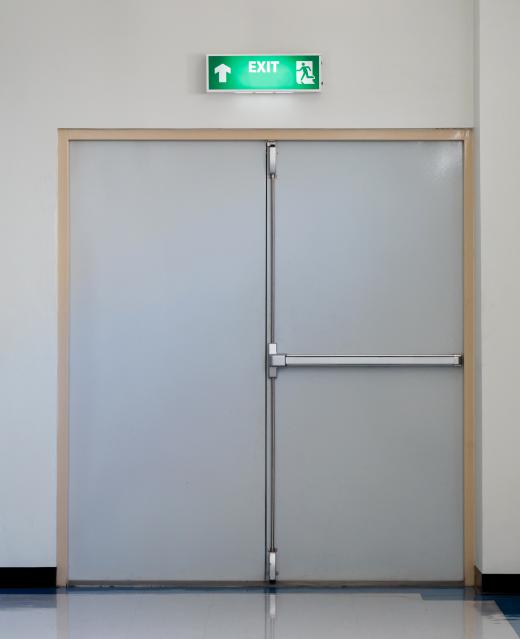A crash bar is a safety device on a swinging door that allows people to push the bar to open the door quickly in an emergency. It is designed for situations where people may literally crash into a door and need it to swing outwards, such as evacuations from buildings in a fire. In many regions, the building code requires the use of crash bars on exit doors, particularly those used for emergency exits, in commercial construction. Such bars can also be placed on key interior doors.
The crash bar typically runs the length of the door, allowing people to hit the bar anywhere to activate the mechanism that allows the door to open. It is placed on the inside of the door. Doors can be retrofitted with crash bars after the fact, and it is also possible to install doors with built-in crash bars. The devices yield to even low pressure, allowing children or people who may feel weak to open the door without too much difficulty.

One advantage to the crash bar is that it can allow for quick escape from a locked area. The door can be locked from the outside to keep people out, while still allowing people inside to activate the door to leave quickly. This can address security concerns about a building that needs to be kept locked. Locking people in could pose a serious threat in an emergency, and the crash bar allows the company to meet security and safety needs.
Such bars can also be useful on doors that people may not be able to operate by hand. People can bump the door to activate the bar and slip through the swinging opening. This can be useful in environments where workers may be laden with objects in their arms, but doors are necessary to limit movements or to provide sound insulation. The crash bar can be located on either side of an interior door in a location like a hallway, depending on the direction of movement.
Like other safety devices, crash bars should be periodically inspected to make sure they are in good working order. They may need oiling to make sure the mechanism activates smoothly, and should be tested to confirm that people can get out in an emergency. If there is a problem with the bar, it should be addressed as quickly as possible, and personnel need to be made aware that they should use an alternate evacuation route in the event of an emergency.
Ever since she began contributing to the site several years ago, Mary has embraced the exciting challenge of being a About Mechanics researcher and writer. Mary has a liberal arts degree from Goddard College and spends her free time reading, cooking, and exploring the great outdoors.

